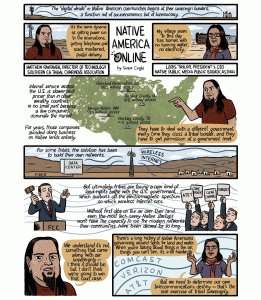The SJSU College of Social Sciences fall 2015 magazine is now online, in HTML and PDF formats. Check it out to learn more about the college’s people, processes, and plans! Also, please consider making an investment to assist us in our work. The college mailed an end of the year solicitation letter last month; I’ll reproduce it below. Please also spread the word to others!
December 3, 2015
Dear _____:
I trust you enjoyed your Fall 2015 copy of our college’s Together newsletter. If you have yet to receive a copy, you may view it online: sjsu.edu/socialsciences/about/newsletter. You will meet the college’s eight new faculty members, learn about the revamped Applied Research Center (ARC), and read about our Information Technology Coordinator’s long-term partnership with a local Native American community, the Muwekma Ohlone. The newsletter also includes some information about me, your new dean.
I’m writing to ask you to consider a year-end gift to the college. Your investment of any amount will directly and positively impact the important work of our students, faculty, and staff. As an example, at a recent ARC event, Professor Amy Leisenring discussed her research on parental engagement in San José elementary schools. The college supported this research with a grant; some of the grant money allowed undergraduate students to assist with data collection and analysis. This activity fit well into our college’s priority to provide financial support and opportunities for our graduate and undergraduate students to do actual research. As you can see, much of the research our students engage in is actually done in collaboration with local communities to solve pressing social issues.
Another college priority is to support our students so they can graduate as quickly as possible. A major strategy to accomplish this is through our Academic Counseling Center for Excellence in the Social Sciences (ACCESS). ACCESS provides students with academic advising, as well as tutoring in key social science skills like writing and statistical analysis. Our undergraduate students work 12-18 hours a week as peer advisors in ACCESS. A gift of $105 would enable one of these peer advisors to tutor an additional student for 10 hours. A $6,000 gift will enable a peer advisor to support fellow students for an entire semester!
Thank you for considering a year-end gift to support our work. An envelope is enclosed for your convenience. You may also go to our secured website to give: sjsu.edu/giving. Please do not hesitate to contact me if you would like additional information on ways you can help your college and its students.
Warmest Regards,
Walter R. Jacobs
Dean, College of Social Sciences
P.S. Together, we impact the future of countless students. Please make your gifts today before the year-end tax deadline.

